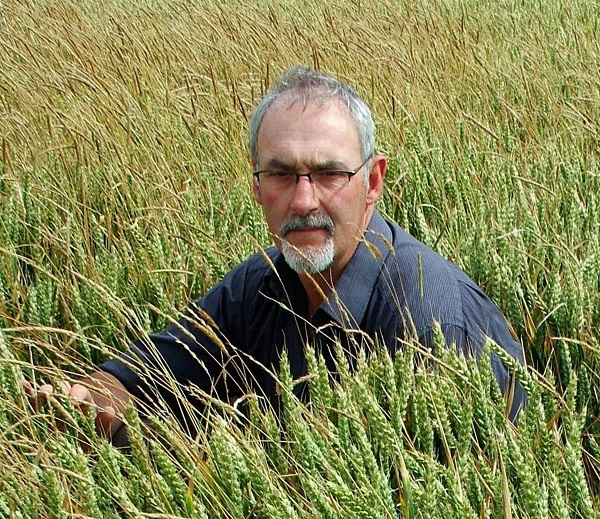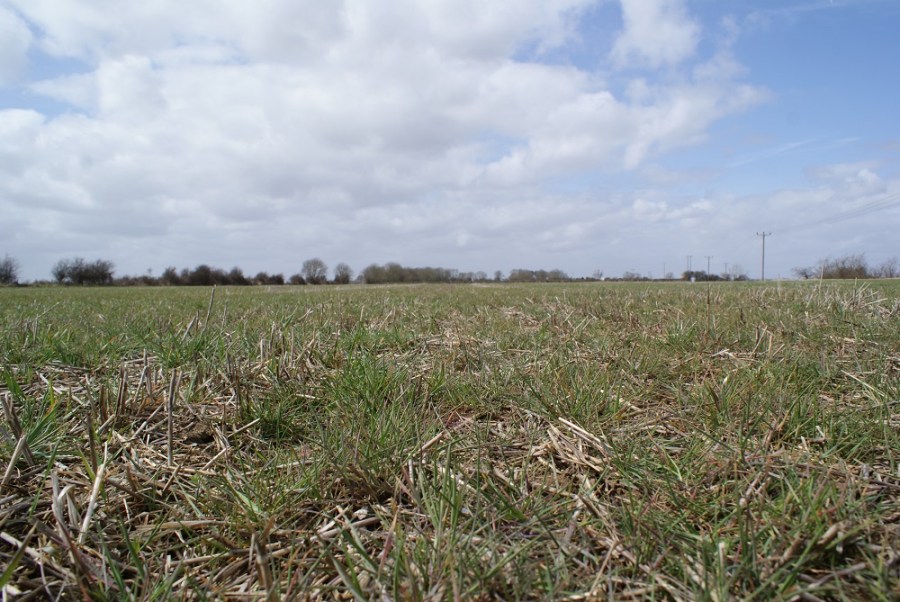Blackgrass control begins with understanding first principles and then tailoring a plan depending on the level of infestation. CPM finds out more.
Shallow cultivations needn’t be done in August.
By Rob Jones
Few problems generate as much discussion as blackgrass and farmers are always looking out for new methods to control it. However, with so many different ideas out there, how do farmers work out what’s required on their farm?
For Dick Neale, technical manager at Hutchinsons, the most important thing is always to refer back to some basic principles of blackgrass control when deciding what to do.

Dick Neale suggests understanding how the blackgrass has got out of hand is the start of developing a strategy to reduce it.
“I think confusion has come from cherry-picking little pieces of advice from different experts and other farmers,” he says. “People tend to choose ideas they like the sound of or ones that they can easily do on their farm, without necessarily thinking about how it all knits together into a single system.”
The foundation for any control programme is understanding the blackgrass population on the farm, he believes. Dick highlights the importance of understanding the probable effects of previous management decisions, but also knowing where blackgrass seed is distributed across the farm, as well as within the soil profile.
After taking these points into account, he would then assess the level of seed return this season before making any final decisions for season 2019-20.
“There’s no substitute for getting out in the field and then being critical about what’s happening on your farm before deciding which fields need what treatment,” he says. “Go out and do some headcounts because it’s all too easy to underestimate blackgrass populations. Even counts as high as 400/m2 can appear ‘not that bad’ when looking out across the field.”
Essentially a good understanding of the blackgrass population is the start of planning how to manage it, he sums up. Bayer’s Dr Gordon Anderson-Taylor shares Dick’s view that managing populations is the key to blackgrass control.
“We’ve always encouraged using herbicides as just one of the tools to manage populations. It may sound obvious, but the aim is to reduce seed return from one season to the next so that the overall population size reduces.”
The initial size of the blackgrass population will determine what measures are needed. “Smaller populations may only need delayed autumn sowing and a good residual stack to sufficiently limit seed return, but when there are several hundred heads/m² more radical action is required,” says Gordon.
On high pressure sites, it’s now well established that spring cropping with barley or another competitive crop is the best option to seize the initiative against blackgrass. On land that’s clean enough for winter cropping, it’s still a necessity to manage the situation carefully to establish a clean crop.
“Blackgrass has two main flushes, generally in the third week of Sept and the second week of Oct, so the aim is to drill after the blackgrass has germinated and been sprayed off – typically from 15 Oct onwards,” says Dick.
The gap between harvest and drilling is also an important time for blackgrass management. “There’s historically a tendency to cultivate straight after the combine – a hangover from the days of deep (10-20cm) non-inversion tillage. Nowadays, for blackgrass control the cultivation is much shallower, ideally in the top 5cm, so that this season’s seed return isn’t mixed deep into the soil profile.
“Shallow cultivations needn’t be done in August. In fact, post-harvest soil is often in good condition to drill, meaning there’s no need to work it unnecessarily. Working soil can often be done to best effect later, in mid-Sept, and this will stimulate blackgrass germination but helps ensure the seedbed remains in good condition until a later drilling date. Cultivating in August can leave the seedbed exposed and cause it to wet up too much.”
Minimal disturbance to maximise blackgrass control
Cambs farmer Hannah Darby, who farms in partnership with her uncle Tony Darby, is dealing with blackgrass on 360ha of fen organic soils and clay. The two different soil types require different management, although the basic principles remain the same.
“The fen soil needs to be worked as little and gently as possible as it’s very easy to disturb and wake up blackgrass seeds. The clay soil is not as sensitive, but minimising disturbance is also better for blackgrass control.
“If we can get away with doing nothing, we will, and make use of the tilth that’s already there to establish crops,” she adds.
The basic rotational plan for the farm is a winter crop – spring crop – winter crop – spring crop and so on, although it does depend on the situation in each field, she explains. The farm uses a 0–10 scoring system for blackgrass to aid decisions on how best to tackle the problem. By her reckoning, the better fields are a ‘3’ or ‘4’ and suitable for winter cereals. The poorest fields are ‘7’ or ‘8’ and go into spring crops to help clean them up.
The Darbys no longer grow oilseed rape for a number of reasons, including the loss of neonicotinoid seed treatments, blackgrass and pigeons. Spring barley, spring oats, spring wheat, sugar beet and peas are all put to good use on the fen soils.
“Spring barley and oats are the most competitive, so we use these on land where spring cropping is used predominantly to tackle the blackgrass.”
According to Hannah, spring peas don’t particularly help with blackgrass control. Fen soils are easily disturbed so even April drilling causes blackgrass germination. Also, because they are vining peas for seed, they have a tendency to go flat which allows any blackgrass to poke above the canopy, she explains.
Winter wheat is drilled from mid-Oct onwards after spraying off the main flushes of blackgrass. “We tend to cultivate fairly soon after harvest to promote a chit of blackgrass. This tends to be a very light cultivation in the top 2.5-5cm of soil – often just a straw rake to disturb things but not mix seed into the soil profile.”
Crops are established using a Weaving GD drill which also helps reduce the level of disturbance, she adds. Cover crops are being used on farm, but Hannah still thinks there is a lot to learn about using them.
“We’re experimenting with cover crops to prevent soil loss on the fen land over the winter and to prevent clay soils becoming waterlogged and biologically inactive. We’re still learning how cover crops fit into the blackgrass control system, but we’ve worked out that you need at least six weeks between spraying off and drilling – often more, depending on the thickness of the crops and weather conditions in early Jan.”




